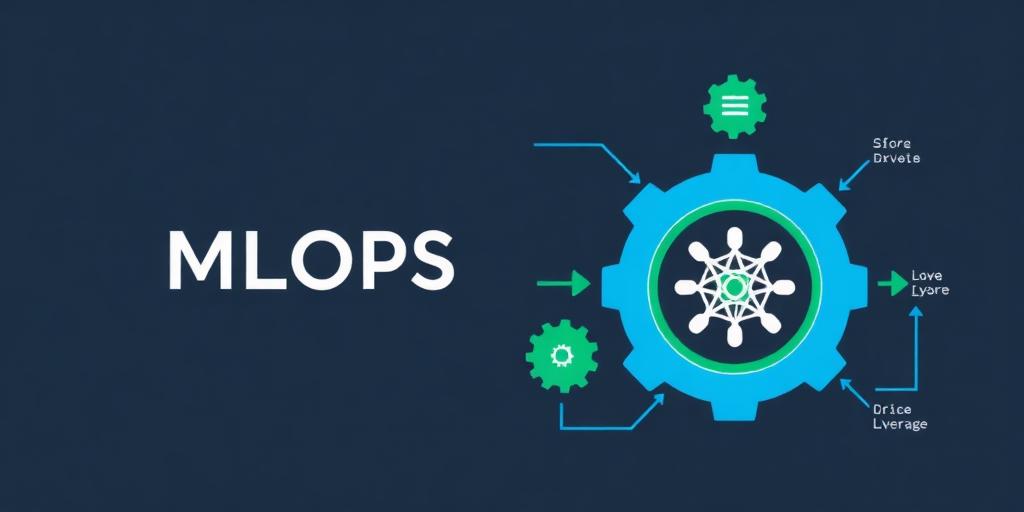The burgeoning field of artificial intelligence has propelled machine learning models from theoretical constructs to indispensable tools driving business innovation. However, the true value of these sophisticated algorithms is realized only when they are effectively deployed, monitored, and managed in production environments. This is precisely where MLOps emerges as a critical discipline, establishing a systematic approach to the entire lifecycle of machine learning. Far more than a mere buzzword, MLOps represents a fundamental paradigm shift, professionalizing the development, deployment, and operational management of machine learning systems.
The MLOps Imperative: Bridging Development and Operations
Historically, the transition of a machine learning model from a data scientist's notebook to a production system was fraught with challenges. Discrepancies between development and production environments, manual deployment processes, and a lack of robust monitoring often led to models underperforming or failing outright. MLOps addresses this by fostering collaboration and automation across data science, engineering, and operations teams. It provides a standardized framework, akin to DevOps for software, ensuring that models are not only accurate but also reliable, scalable, and maintainable in real-world applications. This disciplined approach is essential for realizing the full potential of ML investments.
Key Pillars of MLOps in Deploying Machine Learning Models
Effective deployment is the cornerstone of any successful machine learning initiative. MLOps introduces several key components to streamline this process, ensuring models are moved from experimentation to production with efficiency and control.
- Automated CI/CD for ML (CI/CD for Machine Learning Models): Just as with traditional software, continuous integration and continuous delivery (CI/CD) pipelines are paramount for ML. MLOps extends this concept to include automated testing of data, models, and code, ensuring that new models or updates are rigorously validated before deployment. This minimizes manual errors and accelerates the release cycle.
- Model Versioning and Governance: Production environments often host multiple versions of models. MLOps mandates meticulous versioning of models, data, and code to ensure reproducibility and rollback capabilities. Robust governance frameworks track model lineage, performance metrics, and ownership, facilitating compliance and auditing.
- Scalable Inference and API Management: Deploying a model means making its predictions accessible. MLOps solutions provide mechanisms for deploying models as scalable microservices, often exposed via APIs. This ensures that the model can handle varying request loads efficiently and integrate seamlessly with existing applications.
Effective Management of Machine Learning Models with MLOps
Deployment is only the beginning. The ongoing management of ML models is equally critical, demanding continuous oversight and adaptive strategies. Managing ML models with MLOps ensures sustained performance and operational integrity.
- Continuous Monitoring and Alerting: Unlike traditional software, ML models degrade over time due to shifts in data distributions (data drift) or changes in the relationship between input and output variables (concept drift). MLOps establishes comprehensive monitoring systems to track model performance, data quality, and system health in real-time. Automated alerts notify teams of any anomalies or performance degradation, enabling proactive intervention.
- Retraining and Model Drift Detection: A key aspect of managing ML models is recognizing when they need to be retrained. MLOps pipelines include automated triggers for retraining based on predefined performance thresholds or detected data drift. This ensures models remain relevant and accurate in dynamic environments.
- Resource Optimization: Running ML models in production can be resource-intensive. MLOps practices encompass strategies for optimizing infrastructure utilization, whether on-premises or in the cloud. This includes intelligent resource allocation, auto-scaling, and cost management to ensure efficient operation.
MLOps Best Practices for Robust Systems
To fully leverage MLOps, organizations must adopt a set of best practices that embed resilience, transparency, and efficiency into their ML operations.
- Infrastructure as Code (IaC): Defining infrastructure through code ensures environments are consistent, reproducible, and easily managed. This is crucial for deploying and managing complex ML pipelines across different stages.
- Experiment Tracking and Reproducibility: Maintaining a detailed record of experiments, including hyperparameters, data versions, and model architectures, is vital for debugging, auditing, and continuous improvement. MLOps platforms facilitate this tracking.
- Security and Compliance: Integrating security measures throughout the ML lifecycle, from data ingress to model deployment, is non-negotiable. MLOps helps enforce data privacy, access controls, and regulatory compliance, particularly important in sensitive sectors.
Conclusion
MLOps is no longer an optional add-on but a foundational necessity for any organization serious about operationalizing machine learning. By providing a structured, automated, and collaborative framework, MLOps effectively bridges the gap between research and production, transforming experimental models into robust, scalable, and continuously valuable assets. Its rigorous application ensures not only the successful deployment but also the sustained optimal performance of machine learning models, thereby maximizing their impact and driving tangible business outcomes. Embracing MLOps is a strategic imperative for organizations aiming to harness the full power of AI in today's data-driven landscape.









